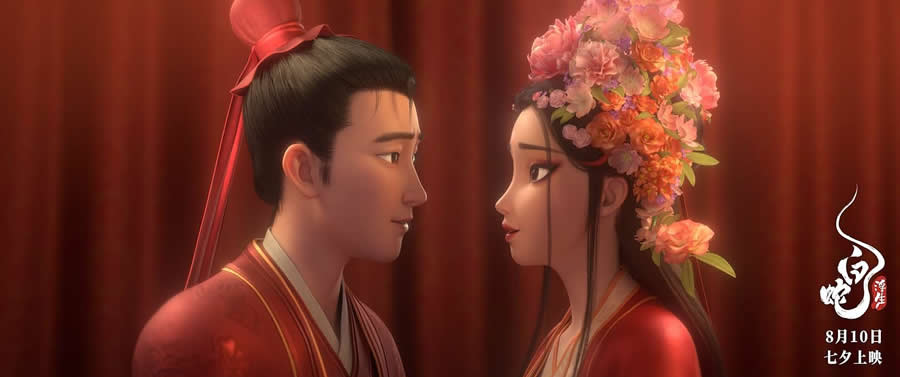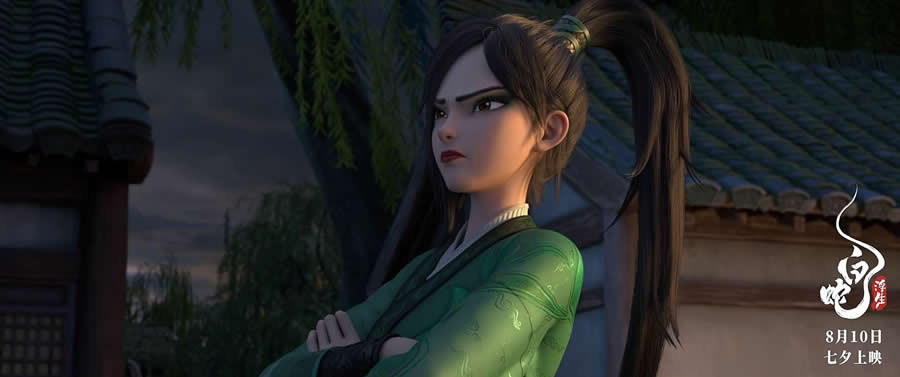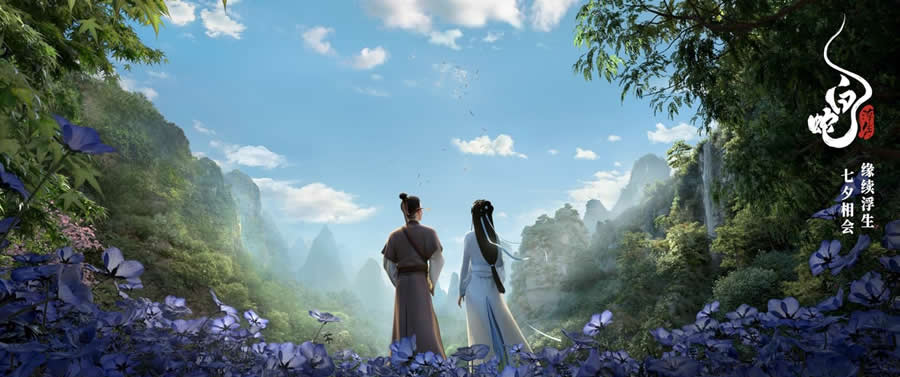Before a single frame of White Snake: Afloat came to life, Rosemary Wu was already sketching emotion into a silhouette. For her, animation isn’t just visual storytelling—it’s a bridge between heritage and heart. As part of the visual development and character design team at Light Chaser Animation Studios, Wu helped breathe new life into one of China’s most enduring legends, treating every frame not as decoration, but as storytelling in motion.

Image: photo by Kobe Levi
The 2024 feature film, directed by Jianxi Chen and Jiakai Li and written by Gary Wang, reimagines the ancient tale of the White Snake with CG animation that’s as soulful as it is stunning. White Snake: Afloat earned over $60 million at the global box office and swept across Asia’s top awards, including Best Visual Effects at the China Animation & Comic Competition Golden Dragon Awards and the winner of “Expected Film of the Year” at the 2024 Weibo Awards Ceremony.
For Wu, the film wasn’t just a professional milestone—it was a creative calling.
Emotions in Form: Shape Language as Narrative

Production still from White Snake: Afloat, via IMDb
Wu approaches design with the instinct of a storyteller. Every curve, angle, and silhouette she draws is loaded with emotional intent.
“A circular shape can evoke gentleness,” she explains. “Spiky lines or sharp silhouettes might carry tension. Even the direction of a composition, horizontal or diagonal, can shift the emotional tone of a scene.”
When designing the magical spell in a key transformation sequence, Wu used long, downward-curving shapes and tilted compositions to create dynamics while conveying a visual sense of gravity and burden—all without a single word. Her designs didn’t just illustrate moments—they anticipated them. The result? Directors rarely needed to articulate emotional beats—Wu’s visuals already carried the message.
This intuitive design sensibility made her indispensable—not just as an artist, but as a co-author of the film’s emotional language.
Designing with Purpose: Honoring Tradition through Function
Working in animation means balancing creative vision with production realities, like rigging, rendering, and other technical constraints. Wu embraced that challenge, blending historical authenticity with modern CG fluency.

Production still from White Snake: Afloat, via IMDb
Take the nighttime disguise worn by Xiao Qing (voiced by Xiaoxi Tang)—a stealth-ready fabric mask designed for covert movement rather than ornamentation. Drawing from Song Dynasty-era references and traditional textiles, Wu rooted the design in historical authenticity while adapting it for animation. The mask needed to drape convincingly, respond naturally to light and motion, and support the character’s expressions—all while reinforcing her secretive role in the story.
“It had to feel ancient and alive,” she says. “I wanted the audience to see the past—but feel the present.”
Wu transformed traditional aesthetics into a CG-friendly design that served both story and screen—a rare feat that reflected her ability to bridge art with functionality.
Adaptability as Artistic Currency
Wu’s influence on White Snake: Afloat extended across departments. From character design and prop variations to magical effects and director collaboration, her fingerprints are everywhere.
That adaptability is rooted in rigorous, multidisciplinary training. A graduate of the University of Southern California’s John C. Hench Division of Animation and Digital Arts, Wu earned a double major in Animation and Game Art, graduating Summa Cum Laude. Her accolades include the Directors’ Scholar Award, Academic Achievement Award, and Diversity, Equity, and Inclusion Award.
“Whether I’m designing a prop or staging a shot, I ask: How does this serve the story, and what does it mean for the teams downstream?”
She doesn’t just think visually—she thinks systemically. This mindset allows her to navigate large-scale productions with both artistic and operational fluency.
Designing for Emotion, Directing for Legacy
For Wu, White Snake: Afloat offered a meaningful opportunity to fully realize her vision—a fusion of artistic intent, cultural heritage, and emotional storytelling. The film captures her vision of storytelling that is both culturally resonant and emotionally universal.
“I want to tell stories rooted in cultural history, but in ways that feel emotionally immediate,” she says. “Technology should carry tradition, not dilute it.”

Production still from White Snake: Afloat, via IMDb
Looking ahead, Wu aspires to direct original animated features that merge mythic depth with design-forward storytelling. Her goal is ambitious but clear: to make the ancient feel intimate, and the animated feel eternal.
Closing the Loop: From Myth to Modernity
Wu’s work underscores a fundamental truth: great animation isn’t about surface polish—it’s about soul. Through White Snake: Afloat, she helped reinterpret a centuries-old legend with emotional clarity and cultural depth, proving that CG animation can be both modern and meaningful.
As audiences continue to discover the film, Wu’s evolving body of work, including the projects featured at rosemarywu.com and her professional journey on LinkedIn, serves as a lasting reminder: behind every frame is an artist who not only knows what to draw—but why it matters.
About the Author
Elena Rivera is a culture and arts writer with a focus on global animation, storytelling craft, and visual design. She is passionate about highlighting underrepresented voices in the creative industries and exploring how tradition and innovation intersect on screen. Her work has appeared in film and design publications across North America and Asia.











